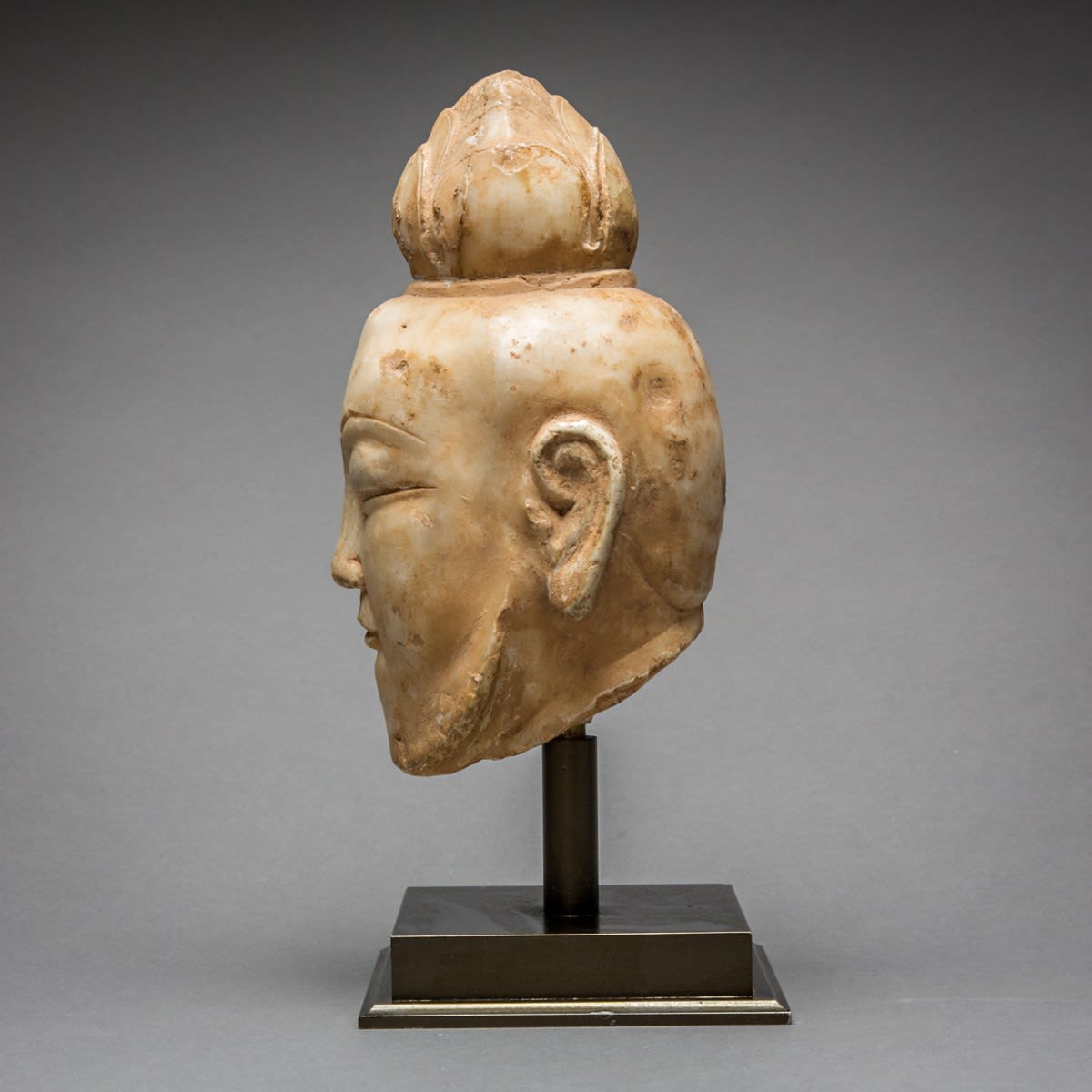Tang Marble Head of Confucius, 618 CE - 907 CE
Marble
21 x 11 cm
8 1/4 x 4 3/8 in
8 1/4 x 4 3/8 in
LK.228
Further images
This handsomely carved marble head of Confucius is a testimony to the fine artistry and craftsmanship the Tang Dynasty experienced. This head is attributed to the founding father of an...
This handsomely carved marble head of Confucius is a testimony to the fine artistry and craftsmanship the Tang Dynasty experienced. This head is attributed to the founding father of an important school of philosophy and ethic approach to life: Confucianism. Confucius believed in the existence of a perfect cosmic order, which should be imitated in human affairs, achieving harmony of the earth with Heaven, the intelligent force that governs the world.
The Tang Dynasty took control in 618 CE when the Li family seized power from the last crumbling remnants of the preceding Sui Dynasty. This political and regal regime was long-lived and lasted for almost 300 years. The imperial aspirations of the preceding periods and early Tang leaders led to unprecedented wealth, resulting in considerable socio-economic stability, the development of trade networks and vast urbanisation for China’s exploding population (estimated at around 50 million people in the 8th century CE).
It was during the Tang Dynasty that China’s outstanding technological and aesthetic achievements opened to external influences, resulting in the introduction of numerous new forms of self-expression, coupled with internal innovation and considerable social freedom. The Tang Dynasty reflected the greatest age for Chinese poetry, painting, and sculpture, although there was a notable decline in Buddhist sculptures following repression of the faith by pro-Taoism administrations later in the regime.
The Tang Dynasty took control in 618 CE when the Li family seized power from the last crumbling remnants of the preceding Sui Dynasty. This political and regal regime was long-lived and lasted for almost 300 years. The imperial aspirations of the preceding periods and early Tang leaders led to unprecedented wealth, resulting in considerable socio-economic stability, the development of trade networks and vast urbanisation for China’s exploding population (estimated at around 50 million people in the 8th century CE).
It was during the Tang Dynasty that China’s outstanding technological and aesthetic achievements opened to external influences, resulting in the introduction of numerous new forms of self-expression, coupled with internal innovation and considerable social freedom. The Tang Dynasty reflected the greatest age for Chinese poetry, painting, and sculpture, although there was a notable decline in Buddhist sculptures following repression of the faith by pro-Taoism administrations later in the regime.







